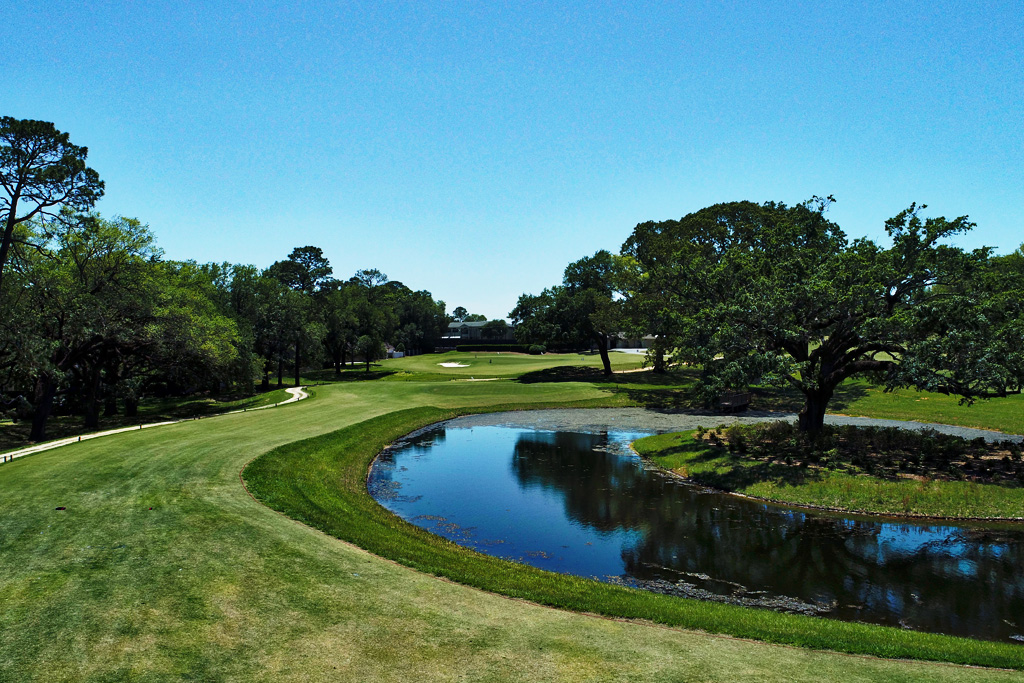Golfweek Features Jerry Pate Design and Teeth of the Dog - Read More
Last month we talked about the social benefits of green spaces. This month, we’re back for another installment in the series: The Environmental Benefits of Green Spaces!
It might seem obvious that Mother Nature likes green spaces, but just how do they make a tangible difference in supporting our natural environment? Let’s explore that!
#1 Green Spaces Reduce Flooding

While it might seem like rainwater should hit the ground and be worked back into the ecosystem, this isn’t always a good thing in our modern world. When rainwater flows off of streets, it takes nitrates, petroleum products, and debris with it. This can then end up in bays, estuaries, and other bodies of water where it shouldn’t be.
But have no fear, green spaces are here! Because they encourage the planting of more trees, green spaces play a key role in reducing the volume of pollutants that make their way into our bodies of water. You see, trees capture that water before it hits the ground.
And of course, this is a win-win for all! The trees are absorbing fresh water that hasn’t collected any pollutants yet, and they’re helping out their nearby watery areas, too.
#2 Advantages Of Green Spaces – Prevent Heat Islands

This is crucially important for both the environment and the people living in it. But, in this post we’re talking about the environment, so we’ll focus on that!
For starters, what is a heat island? Let’s look at the EPA’s definition: “Heat islands are urbanized areas that experience higher temperatures than outlying areas. Structures such as buildings, roads, and other infrastructure absorb and re-emit the sun’s heat more than natural landscapes such as forests and water bodies.”
An outdoor space being heated in this way is dangerous for people, but it also proves detrimental to the environment, which now has to cope with heat levels that aren’t natural. As this article by UCAR (Center for Science Education) explains, “Extreme heat and stagnant air during a heat wave increases the amount of ozone pollution and particulate pollution.” Google your area’s list of daily AQI (air quality index) numbers over the course of the past year, and you’ll notice the air quality suffers on warmer days. Heat islands undoubtedly exasperate this issue.
And that’s not all. They also contribute to climate change because of the energy usage they drive. When more people have to run the air conditioner for longer periods of time, it takes a toll.
So, green spaces are very important! Since trees and other vegetation give shade to surfaces like sidewalks, which are a key component in the creation of heat islands, they help to reduce heat, especially in urban environments.
#3 Health Benefits Of Green Spaces – Adds Oxygen to the Air

The USDA suggests that “one large tree can provide a day’s supply of oxygen for up to four people.”
But this isn’t only a benefit to us humans. TreePeople (which has a whole comprehensive list on the benefits of trees) paints a picture of the eco-friendly boon trees are:
“Excess carbon dioxide (CO2) is building up in our atmosphere, contributing to climate change. Trees absorb CO2, removing and storing the carbon while releasing oxygen back into the air. In one year, an acre of mature trees absorbs the same amount of CO2 produced when you drive your car 26,000 miles.”
That is no small feat!
As you can see from these three points, the environmental benefits of green spaces are numerous! There are so many reasons to incorporate these into your landscape architecture, especially if you’re in an urban area.
To learn how Jerry Pate Design could help you achieve an eco-friendly, people-centric green space, get in touch!

